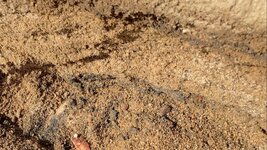TheNorseMontanan
Greenie
Just wondering how you guys read the ground when your digging an old river bed? Mostly what layers or types of dirt your looking for, dark gray clay? red dirt? compacted gravels? Not sure how far down I need to go to get to bedrock, and was curious to know if any of the layers above bedrock, closer to the surface, are worth running?? I ran about 5 buckets of dirt that was just below the rich black soil level. The material was medium to large river rock with small gravels mixed in. Got about 20 colors, pretty small pieces; guessing this is flood gold. Is this where I should focus to find the pay streak or should I continue digging down?
Thanks for any information or advice, it's greatly appreciated!
Thanks for any information or advice, it's greatly appreciated!
Amazon Forum Fav 👍
Upvote
0


 Sometimes gold is on bedrock, sometimes it's not. Sometimes there's lots in red dirt or compacted gravels, sometimes there's not. And sometimes it's on top of clay, but sometimes it's not.
Sometimes gold is on bedrock, sometimes it's not. Sometimes there's lots in red dirt or compacted gravels, sometimes there's not. And sometimes it's on top of clay, but sometimes it's not.

